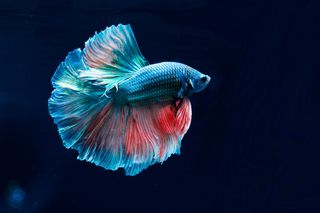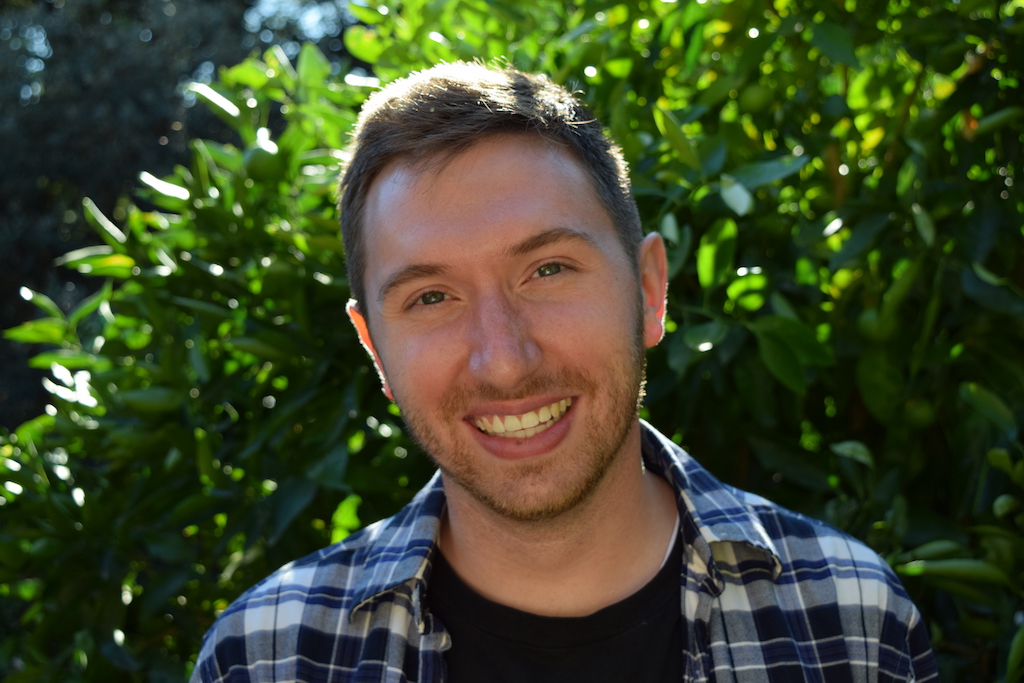How Big Do Fighting Fish Get Updated
How Big Do Fighting Fish Get
Betta Fish: The Dazzling Siamese Fighting Fish

Betta fish, also called Siamese fighting fish, are small, colorful fish that are native to Southeast Asia and common in the pet trade.
In Thailand, people telephone call betta fish " pla kat ," which means "fighting fish," and it couldn't be a more advisable name. Male bettas are known fighters, aggressively flaring their gill covers and nipping at the fins of other males (or even females) who go too close. In the wild, fights may final but 15 minutes, but people in Thailand have bred bettas that are capable of fighting for hours.
Bettas practice well in captivity, and their aggression, which many detect entertaining, along with their vibrant colors have helped make the species popular every bit pets worldwide. Back in their native home, though, the fish are slowly disappearing.
Where practise betta fish come up from?
A total of 73 kinds of betta alive in freshwater environments of Southeast Asia, and all of these varieties belong to the family Osphronemidae. But the species nigh people are familiar with is Betta splendens. These bettas originate from the Mekong and Chao Phraya river basins in Thailand (formerly called Siam). The fish hang out in shallow, nearly stagnant waters, such as marshes, flood plains and rice paddies. In the wild, the animals munch on unlucky insects that fall into the h2o, likewise as small crustaceans, musquito larvae and other aquatic arthropods.
Bettas are usually small, from 2.4 to 3.1 inches long (6 to 8 centimeters), and alive for near two years on average. In the wild, male bettas never grow the beautiful, flowing fins commonly seen on pet store bettas, with their wildly different shapes and vibrant golds, reds, dejection, greens and violets. Those characteristics are the issue of selective breeding, according to the University of Michigan'due south Animal Diversity Web . Wild Siamese fighting fish have a deadening light-green coloration and brusque fins, which they flash to attract mates and ward off predators, such as salamanders , cats and larger fish. The more than flamboyant, captive males, nonetheless, seem to use their enhanced colors to their advantage, both to concenter mates and to fight when defending territory.

Scientists have been specially interested in bettas' pugnacious behavior and the physiological mechanisms behind information technology. The fish accept become a model organism for studying the behavioral effects of spilled rough oil, antidepressants like Prozac and fluoxetine, dissolved drug therapies like flutamide in waterways and fifty-fifty depressants like booze.
The fish's assailment has also long been exploited for people'southward financial gain as they gamble on fish fights. People in Southeast Asia have defenseless and bred Siamese fighting fish for centuries to compete in staged battles, which people place wagers on, similar to cock fights. Such organized fish fights are illegal in the Us. Fifty-fifty using a mirror to make the fish retrieve there's another individual is considered unethical, although some companies have produced branded "practice mirrors" to keep bettas flexing their fins to kickoff boredom and low.
How do betta fish breed?
Reproductive behavior among Siamese fighting fish is a alloy of beauty and terror, as their courting can get a piffling dicey. It starts with a male blowing bubbles. He gulps some air at the surface and and then blows out mucus-coated bubbles that sit at the water's surface. The male does this for hours until a thick nest of bubbling forms. Then, he pursues a female.
Male betta fish try to politely entice a female under the nest at first, flashing their fins and flaring their gill covers. But if she's unresponsive or uncooperative, the male tin can turn violent, nipping at her tail and fins so they tear and ripping off her scales, according to the Beast Diversity Web.
Related: Strange Honey: 11 Animals with Truly Weird Courtship Rituals
When the female is finally cajoled into mating, prepare to accept the male person, the two dance, circling each other and nudging one another's sides. The male eventually wraps one fin around the female person in an embrace, flips her upside downwardly and fertilizes her eggs. After he lets go, the female person remains suspended belly-up, as if in a trance, and releases a few fertilized eggs, usually iii to seven at a fourth dimension. The male person catches the eggs in his rima oris every bit they sink and coats them with mucus before attaching them to his nest of bubbles.
The male person and female person will perform this trip the light fantastic dozens of times until she has produced hundreds of eggs. When he's done, the male aggressively drives away the female and guards the bubble nest until the eggs hatch, 24 to 48 hours later on, co-ordinate to Seriously Fish . The male person will protect the hatchlings for an additional three to iv days while they terminate absorbing their yolks. Once the fish fry are complimentary pond, though, they're on their own. The immature become sexually mature roughly v months later.
Are betta fish threatened?
Siamese fighting fish are considered vulnerable as their habitat has been lost for urban development and farmland, according to the International Wedlock for Conservation of Nature (IUCN) Cerise Listing . Pollution from farming and cities has also threatened the fish, and their population in the wild is declining. The IUCN has suggested that convict breeding programs may help salvage the wild population.
A large population of bettas, however, swim in aquariums effectually the globe. The fish became pet trade favorites and accept only increased in popularity because of their easy care and eye-catching colors (not to mention a inexpensive toll; they're sold for as piffling as $2.49). The pet trade's population of bettas is stocked near entirely from captive populations, not from the wild, according to Globe.com .
Bettas are easy to care for in office because they live in warm h2o, typically 75-eighty degrees Fahrenheit (24-27 degrees Celsius) and are perfectly fine living without other fish around. Bettas can also breathe oxygen from both the air and the h2o because of a lung-like organ called the labyrinth.
In the wild, the labyrinth organ allows them to survive in poorly oxygenated water and when water nigh dries upward. But in captivity, it means they can live in much smaller tanks than other fish, and tanks that don't require consistent oxygenation. Veterinarians, however, suggest that people go on the fish in at least a two-gallon (7.vi-liter) tank, according to Adelphi Academy .
Additional resources:
- Learn more about bettas and their care , at Aqueon.
- Read more near the best ways to treat pet bettas , from the University of Illinois at Urbana-Champaign veterinarian school.
- Larn more about how bettas have often been mistreated in the pet manufacture , from National Geographic.
How Big Do Fighting Fish Get
Posted by: jacksonthersellse.blogspot.com

0 Response to "How Big Do Fighting Fish Get Updated"
Post a Comment